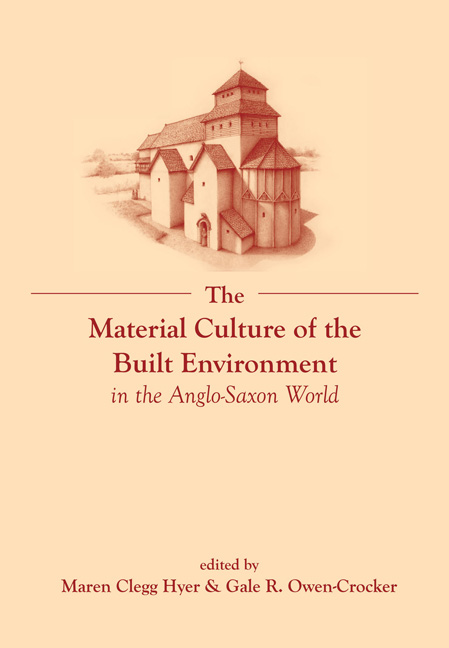Book contents
- Frontmatter
- Dedication
- Contents
- List of Figures
- List of Tables
- List of Contributors
- Introduction
- 1 Enta geweorc: The Ruin and its Contexts Reconsidered
- 2 Roads and Tracks in Anglo-Saxon England
- 3 Domestic Dwellings, Workshops and Working Buildings
- 4 Place and Power: Meetings between Kings in Early Anglo-Saxon England
- 5 The Cuckoo and the Magpie: The Building Culture of the Anglo-Saxon Church
- 6 Landmarks of Faith: Crosses and other Free-standing Stones
- 7 Landmarks of the Dead: Exploring Anglo-Saxon Mortuary Geographies
- 8 Boundaries and Walls
- 9 The Landscape of Late Saxon Burhs and the Politics of Urban Foundation
- 10 Signalling Intent: Beacons, Lookouts and Military Communications
- Notes
- Suggested Reading
- Index
Introduction
- Frontmatter
- Dedication
- Contents
- List of Figures
- List of Tables
- List of Contributors
- Introduction
- 1 Enta geweorc: The Ruin and its Contexts Reconsidered
- 2 Roads and Tracks in Anglo-Saxon England
- 3 Domestic Dwellings, Workshops and Working Buildings
- 4 Place and Power: Meetings between Kings in Early Anglo-Saxon England
- 5 The Cuckoo and the Magpie: The Building Culture of the Anglo-Saxon Church
- 6 Landmarks of Faith: Crosses and other Free-standing Stones
- 7 Landmarks of the Dead: Exploring Anglo-Saxon Mortuary Geographies
- 8 Boundaries and Walls
- 9 The Landscape of Late Saxon Burhs and the Politics of Urban Foundation
- 10 Signalling Intent: Beacons, Lookouts and Military Communications
- Notes
- Suggested Reading
- Index
Summary
It is related that there was so great a peace in Britain, wherever the dominion of King Edwin reached, that, as the proverb still runs, a woman with a new-born child could walk throughout the island from sea to sea and take no harm. The king cared so much for the good of the people that in various places where he had noticed clear springs near the highway, he caused stakes to be set up and bronze drinking cups to be hung on them for the refreshment of travellers.
This book sets out to examine how man-made structures impinged on the natural landscape of Anglo-Saxon England. Its individual chapters demonstrate an increasing degree of co-operation, of planning and of royal control over the territory and social structures of Anglo-Saxon England as well as the widely visible power and influence of the Church.
Twenty-first-century human beings take a built environment for granted. Most people in Europe live and work in towns or their suburbs. These places are reached by roads and bridges and supplied with water, electricity and, in some countries, piped gas. They are lit at night. Our environment is totally mapped, with literacy and numeracy taken for granted: as we move from place to place we are guided by signs that identify places and structures. Street names are labelled and, even as we cross bridges, rivers are identified for us by name. The system of zones which was invented in the nineteenth century to cope with increasing postal deliveries in big cities has now been refined to the point that we can key a combination of letters and numbers into a computer or mobile phone and it will direct us to a specific building. There are still wild and uninhabited places in England, but to reach them we generally take transport, and we usually visit them for recreational activities such as walking, cycling, fishing or shooting which are purposeful only for the pursuit of pleasure. Few people live or work in wilderness.
To travel from coast to coast in Anglo-Saxon times without company, like Bede's putative female traveller in the opening quotation, was, however, an adventure, a potentially dangerous one.
- Type
- Chapter
- Information
- Publisher: Liverpool University PressPrint publication year: 2015



